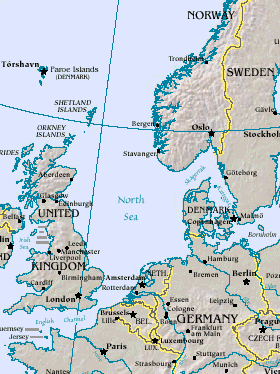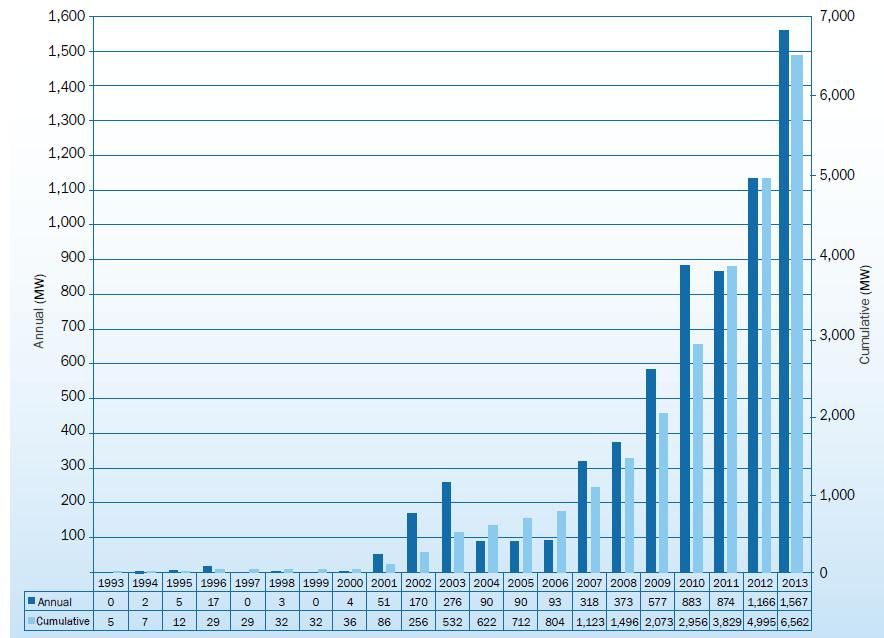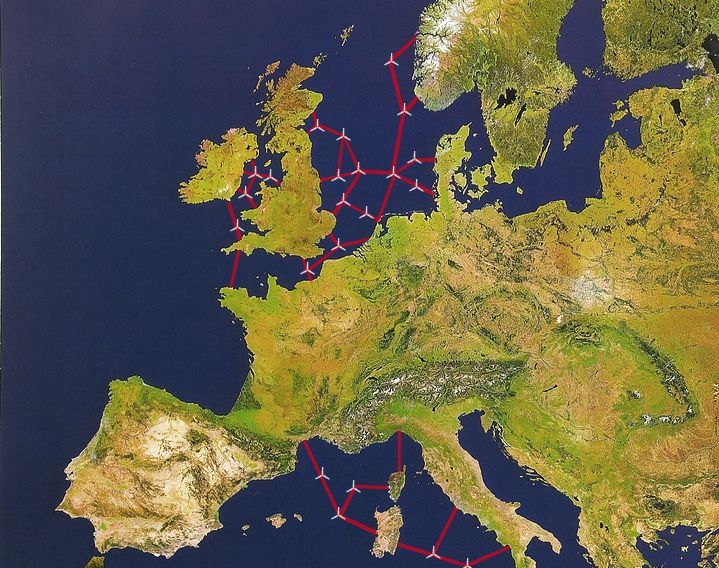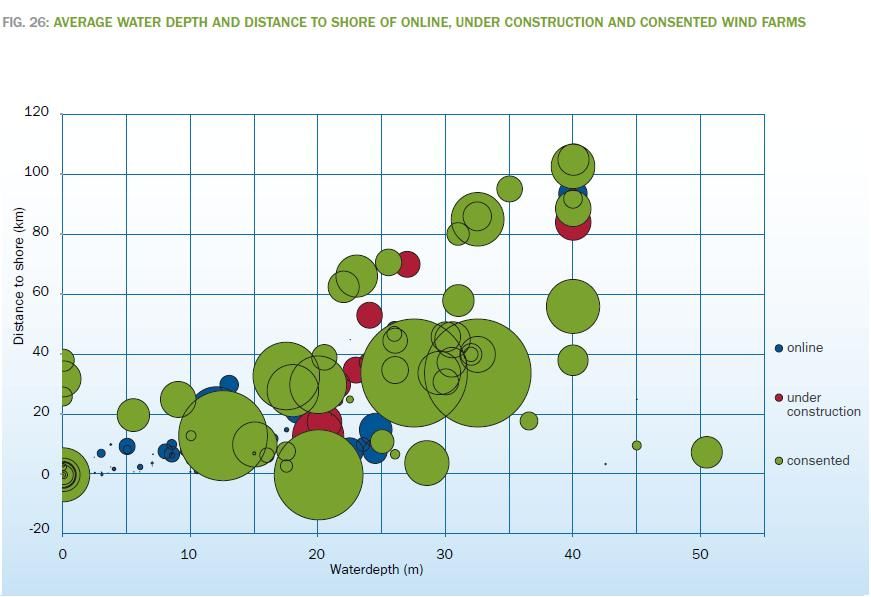Offshore Wind in the North Sea – By 2GreenEnergy Intern Olivier Goavec

In its goal to meet its objectives in terms of gas emission and to become less dependent on energy importations (coal, gas, oil), Europe needs to develop green energy as these sources are massively present and free for the taking. One of the most promising fields in term of power and cost is the offshore wind farm. With their installations far from the coast (30km on average for wind farms built in 2013) these wind turbines to benefit a powerful and constant wind which increases the load factor and the efficiency of the facilities. In this context, Europe has the chance to have an important shoreline to exploit in terms of power capacity or offshore wind jobs (58,000 FTE in 2012 to 318,000 FTE in 2030).
This market started its development at the beginning of the 2000s and grew rapidly due to policy that was introduced in Europe. Today, the investments are estimated between €4.6 billion and €6.4 billion for the offshore part, which is mainly located in The Atlantic Ocean, The English Chanel and The Baltic Sea for a total power output of 6,562MW at the end of 2013. The power is distributed as follow: in the North Sea for 66% (4,363 MW), The Baltic Sea for 17% (1,143 MW) and the Atlantic Ocean with 1,056 MW or 16%.
Europe has a strong leader position in term of offshore capacities, with 90% of the world’s total installed power and the UK leads the way unquestionably with 3,681MW followed by the Denmark with 1,271MW.
CUMULATIVE AND ANNUAL OFFSHORE WIND INSTALLATIONS (MW) IN EUROPE:
The North Sea

Why the North Sea?
The North Sea isn’t new to energy exploitation. Since 1969 and the discovery of the Ekofisk oilfield, that region has been quite attractive. The onset of the first oil crisis in 1973 encouraged the governments of Western Europe to invest in the North Sea to diversify their importation of oil and gas. In the 1990s the region became the most important concentration of oil platforms in the world (more than 450).
This problem of energetic dependence in Europe is widespread; witness the crisis between Russia and the Ukraine. Indeed, 27% of the European gas consumption comes from Russia and 40% of it passes through Ukrainian pipelines, which could penalize the Continent if Moscow decides to turn off the gas.
Today the prospect for oil depletion in the North Sea, coupled with the bold-out of and wind farms are becoming increasingly present. There are several different aspects to the interest in the North Sea:
– The first one is technical. The North Sea is shallow, which is essential for the current technologies, indeed past 40m of depth it is not economical to install a wind turbine. In 2013 the average depth for wind farm off the coast of Europe was 20m. A solution to this problem would be floating wind turbines, but there are only three prototypes of this technology and the industry is not sufficient mature. One of these has been installed in 2009 in Norway another in 2011 in Portugal and the last one off the coast of Fukushima in 2013.
– The second strong interest is the geography. The North Sea is located between the UK, France, Belgium, Germany, the Netherlands, Denmark, Sweden and Norway. This makes the North See the perfect location to develop a part of the European super grid by linking the different wind farms each other, in order to reinforce the grid in the Northern Europe. This super grid is currently one of the energetic priorities of Europe. This electrical network will enable a better electricity market by increasing the capacity of cross-border trade, a better implementation of renewable by sending the power where it’s needed, and improved security in the grid. In the North Sea, 25.5GW of offshore power is expected by 2020 and 82.9 GW by 2030. Hence the utility of such a grid. For further information take a look at North Seas Countries Offshore Grid Initiative (NSCOGI) or the European Network of Transmission System Operators for Electricity (ENSTSOE).
European super grid in the North Sea:
– Different interesting projects are developing in this area concerning the storage of electricity. First, we can mention P2G (power to gas), which uses the surplus production to electrolyze water, producing hydrogen, or methane by the addition of C02. The hydrogen can be injected in the gas grid if its concentration doesn’t exceed 6% and facilities’ efficiency can be increased this way. By contrast, there are no restrictions for the methane because it is essentially natural gas. This process of including storage is a good way to optimize the insertion of a wind farm on the electricity grid.
Another aspect of storage in this region is hydroelectricity; Norway produces a major part of its electricity with this technology. In cases where power producers can’t inject their electricity into the grid because the demand is too low, they can send the power to Norway via HVDC (high voltage direct current) transmission line, to pump water uphill, back into the reservoirs. Then, when they have a consumption peak, they release the water and produce electricity. One flavor of this pumped hydro energy storage came from Belgium; they had the idea to create an “energy atoll.” The principle is simple: they create an artificial island, with a reservoir at the center. When there is no electricity demand, they pump the water out of the island, and let it come back you they need power. These projects could be a way to optimize the production wind farms and to explore new horizons to store electricity.
In 2013, 72% of all the new offshore capacity installed in Europe was in the North Sea, principally due to the points mentioned above. Europe has a real offshore sector, with strong stakeholders: Siemens, BARD, Vestas and Alston for turbines and ABB for transmission line between them. Thanks to that, the offshore wind turbine market in Europe will continue to grow. As of today, 12 projects are under construction to increase the installed capacity to 9.4GW against 6.562GW today, as shown on this graph:
At the moment, manufacturers are restricted by actual technologies: they need a shallow depth, hence the main location being the North Sea. However, the incoming arrival of floating wind turbines will solve this depth issue. One could guess the North Sea may not have the first position anymore then, when it comes to building offshore wind turbines.
To see the location of current offshore wind farm in the world and future project, the link below is interesting.
http://www.4coffshore.com/offshorewind/
Sources :
The European offshore wind industry – key trends and statistics 2013 by EWEA (English http://www.ewea.org/policy-issues/offshore/)
Offshore Grid Development in the North Seas ENTSO-E views (English https://www.entsoe.eu/publications/system-development-reports/north-seas-grid-development/)
http://en.wikipedia.org/wiki/North_Sea (English)
http://perspective.usherbrooke.ca/bilan/servlet/BMAnalyse?codeAnalyse=1338 (French)
http://www.renewablepowernews.com/archives/858 (English)



